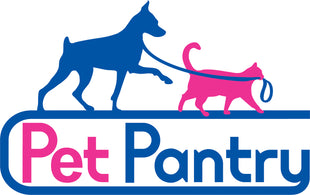A guide to choosing the right food for cats
With so many different foods on the market, how do you choose a food that works well for your cat? There are many well-formulated cat foods to choose from today, so here are some guidelines to follow.
Look at the ingredients
High quality ingredients are essential for a healthy cat food. Some economy brands are made from inexpensive ingredients, and therefore, may not be highly digestible. Because of this, many health-promoting nutrients may pass right through your cat without being absorbed. It also means that you have to feed larger amounts of that lower quality food to provide your pet with the same nutrition as a smaller amount of premium food. When you compare the cost of these foods on a per serving basis, and realize how quickly you go through a bag, economy foods may actually cost more in the long run. Reduced digestibility also means that litter box clean-up may become a bigger task with an economy food.
Whole food ingredients, like fresh meats, fruits, vegetables and grains, provide the essential nutrients your cat requires. They are also a source of other important components such as antioxidants to support optimal health.
Select a protein source
Lamb, chicken, fish – which one to choose? For a cat without allergies, any named animal protein source will do. For cats with food sensitivities, selecting the protein source is a bit trickier. Choose a protein source that your cat has not eaten before. If you are not sure, go with something obscure, such as duck. A diet that has a limited number of ingredients while meeting the nutritional requirements of your cat may also be beneficial to lessen the chance of an adverse food reaction.
When you are looking for a healthy food for your cat, reviewing the list of ingredients on the back of the bag is a good place to start. By law, pet food labels must list their ingredients in decreasing order by weight. Look for a species-specific meat or meal as the first ingredient, i.e. turkey meal or de-boned turkey; salmon meal or de-boned salmon. The protein in these ingredients all have a high biological value, which means the protein contains a high percentage of essential amino acids.
Consider your cat’s activity level and weight
Although many foods on the market today are formulated to meet the requirements of “”all life stages””, you may need to choose a food that is designed to meet specific needs. As an example, an overweight cat may need a food with fewer calories, particularly if you have already tried reducing the amount of the current food you are feeding. With a calorie-reduced food you may be able to feed the same volume, but your cat will be getting fewer calories.
Extras to look for
Omega 3 fatty acids have been shown to provide health benefits in cats. The omega 3 content of a food can be found in the guaranteed analysis on the packaging or in the food’s nutrient profile from the manufacturer. Some examples of ingredients that contain omega 3 fatty acids are salmon oil, flax oil, and canola oil.
There are many ways to keep pet foods fresh. Look for rosemary or mixed tocopherols as natural sources of antioxidants to preserve foods.
If you need help choosing the right food for your pet, you can call us at 1-778-379-4090
BY: MICHELE DIXON

